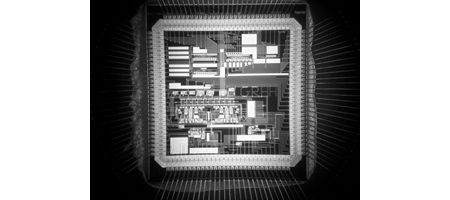MIT researchers have designed a computer chip that mimics how the brain’s neurons adapt in response to new information, known as plasticity.

With about 400 transistors, the chip can simulate the activity of a single brain synapse — the connection between two neurons that lets information flow from one to the other.
They say it will help neuroscientists learn much more about how the brain works, and could also be used in neural prosthetic devices such as artificial retinas.
There are about 100 billion neurons in the brain, each of which forms synapses with many other neurons. The presynaptic neuron releases neurotransmitters, such as glutamate and GABA, which bind to receptors on the postsynaptic cell membrane, activating ion channels. Opening and closing those channels changes the cell’s electrical potential.
If the potential changes dramatically enough, the cell fires an electrical impulse called an action potential.
The ion channels control the flow of charged atoms such as sodium, potassium and calcium, and are also key to two processes known as long-term potentiation (LTP) and long-term depression (LTD), which strengthen and weaken synapses, respectively.
The new chip’s transistors mimic the activity of different ion channels, with current flowing through them in analog, not digital, fashion. A gradient of electrical potential drives current to flow through the transistors just as ions flow through ion channels in a cell.
“We can tweak the parameters of the circuit to match specific ion channels,” says principal research scientist Chi-Sang Poon. “We now have a way to capture each and every ionic process that’s going on in a neuron.”
The MIT researchers plan to use their chip to build systems that model specific neural functions – the visual processing system, for example. Such systems could be much faster than digital computers, they say.
Another potential application is building chips that can interface with biological systems – neural prosthetic devices such as artificial retinas, say. Eventually, says Poon, the chips could also become building blocks for artificial intelligence devices.






